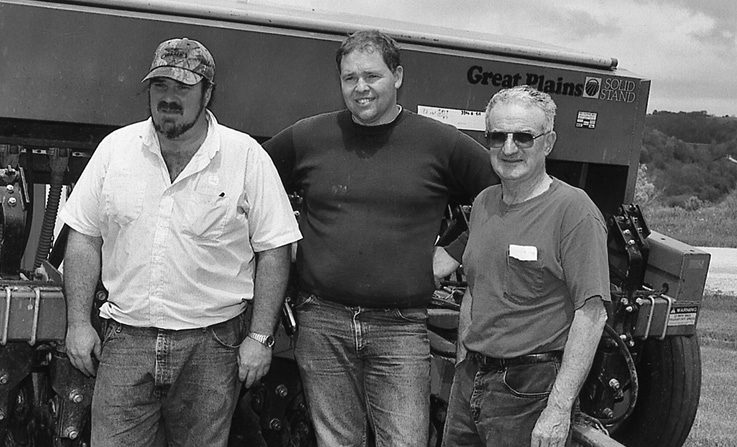No-Till Farmer
Get full access NOW to the most comprehensive, powerful and easy-to-use online resource for no-tillage practices. Just one good idea will pay for your subscription hundreds of times over.

Whether his 12-row, no-till planter needs it or not, Maury McLean usually spends part of the winter trying to figure out ways to make the machine more efficient. “I always get enthused about the new growing season by early March and make some last-minute changes and upgrades to the planter,” says the veteran Lancaster, Wis., no-tiller.
He’s part of an informal 1,300-acre cropping partnership with son Paul and neighbor Joe Zenz. Each has his own land along with a lineup of machinery. But to increase efficiencies, they handle the planting, spraying and harvesting of 1,300 acres of corn, soybeans and wheat together.

“Joe handles most of the planting while I keep the supplies coming to the no-till planter,” says Mclean. “Once he gets 2 days ahead with planting, I’ll start spraying for weeds and insects.”
To handle the application of up to 5 gallons per acre of 9-18-8 with potassium thio-sulfate popup fertilizer, McLean relies on a 12-outlet squeeze pump that seems to do a better job of equalizing the fertilizer rate than a 12-row manifold fed by a piston pump.

“I didn’t want a piston pump for applying popup fertilizer because I was concerned about fertilizer burn on the seed and accuracy between the rows,” he says. “If any outlets of a manifold become plugged, then the flow rate increases dramatically to the remaining rows.”
Since pressure surges often lead to uneven flow rates, the partners decided to check the accuracy of their squeeze pump. They built…